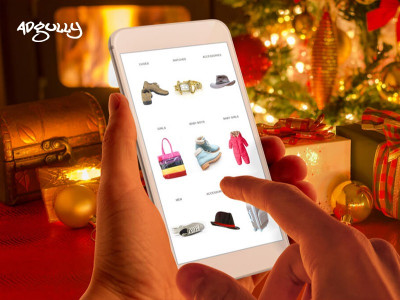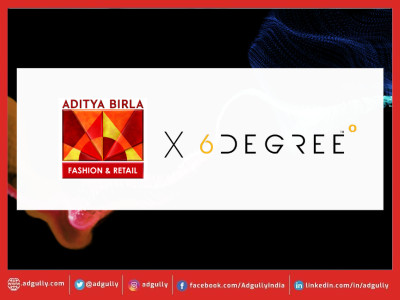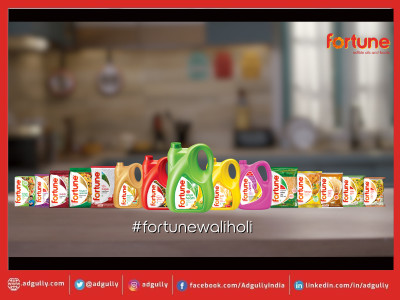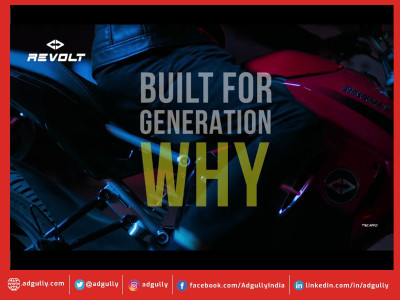Bonanza times for e-commerce platforms amid festive buying frenzy
The first week (October 2-5) of the festive sale of 2021 has seen e-commerce platforms, including social commerce and grocery, together garnering ~$2.7 billion in sales, according to the latest report released by RedSeer Consulting, ‘Mid-Festive Check In’. E-commerce platforms are on track to achieving $4.8 billion gross merchandise value (GMV), as per RedSeer Consulting’s projections.
Further, the report added that the first four days of the festive week in CY '20 accounted for 63% of the overall festive week sales – as compared to this year where it accounts for ~57% of the projected sales. The report also estimated that over 75% of customers are planning to buy equivalent to or more than last year across categories like mobiles, large appliances, beauty and fashion.
While the fall in the number of COVID-19 cases across the country and the massive vaccination drive has brought back confidence among the people to move out of their homes, online shopping still occupies a major chunk of festive season sales. As seen during the pre-Dussehra and Durga Puja buying frenzy, retail footfalls and sales are on an upswing. At the same time, e-commerce platforms are also seeing greater traction as they come up with online festive sales events.
Speaking about how brands and advertisers are leveraging the opportunities during the festive season, further buoyed by back-to-back IPL and ICC T-20 World Cup tournaments, Siddharth Devnani, Co-founder & Director, SoCheers, said, “The festive season has kicked off with both the leading e-commerce portals – Amazon and Flipkart – going live with their annual sales. Electronics, appliances, and mobiles are expected to be the top drivers of growth due to several reasons. There is pent-up demand and buyers have been holding back on their purchases – some since last year and some waiting for new launches and discounts to kick in. To add to that, now there is a whole new audience who’s got comfortable shopping online, especially in Tier 2 and 3 cities. We have seen a lot of new launches too, in these categories. Apparels and cosmetics are seeing more traction as compared to last year as well.”
Along similar lines, Shreyansh Bhandari, Co-Founder and Chief Operating Officer, Lyxel & Flamingo, too, observed, “Given the current shift in consumer behaviour, we are positive that even with Unlock 2.0, online shopping will still expand and accelerate more than it was before the pandemic. COVID-19 has accelerated the transition to a more digital world and has encouraged people to explore and adapt to e-commerce. Customers are exploring the Internet in search of more substitutes to their current products and have switched to online platforms for product discovery and comparisons. Meanwhile, platforms like Amazon and Flipkart have also evolved to improve user experience as well as integrating vernacular searches to capture more audience. Multiple factors like convenience and ease of shopping, technological improvements, discounts and offers, increased usage of digital payments, etc., ensure that online shopping is set to stay. At the same time, brands will also have to ensure that they stay connected with their new digitally acquired users and keep offering content that is useful and helps them in making a better purchase decision.”
RedSeer’s report also states that the seller sentiments are equally optimistic this year. Many sellers are planning to offer ~10-30% discounts on platforms, with the goal of releasing higher volume sales. Sellers on both e-commerce and social commerce platforms have a favourable perspective of forecasted volume sales and growth during the upcoming festive season. While the festive season is primarily driven by offers and discounts, this year e-commerce companies will be using the festive season to showcase new trends, launches, announcements of brand ambassadors. Offers are used to drive higher traffic on the platforms, even as the platforms are using this traffic to also engage with the consumers and talk about new initiatives.
The e-commerce advantage for brands
“With an ever increasing online customer base post-COVID-19, all of us are expecting a big uptick during this festive season,” remarked Ajay Dhyani, General Manager - Marketing and eCommerce, Timex Group India. He further said, “A survey conducted by The Trade Desk found that 91% of Indian consumers are planning a purchase during the festive season and six in ten are interested in learning about new brands during this period. Strategy wise, we are also observing a lot of new launches happening keeping festive season in mind. E-commerce platforms are offering an improved customer experience by providing rich product information for a better product selection, exciting deals, multiple payment options, timely deliveries, etc. Brands are also working towards preparing for the inventory and supply chain to meet the increasing demands.”
Speaking about lifestyle brand Westside’s festive season strategy, Umashan Naidoo, Head of Customer, Westside - A Tata Enterprise, said, “Our festive campaign, ‘Light Up’, is a celebration of women. Our narrative examines her Light Up moments. This festive period, our 360-degree festive fashion offers her the choice of finding her style on the Westside. As a brand, our priority is to make sure that what she sees on Instagram leads her to curated pages on the site. This season, we concentrated our efforts on a campaign that gives her a glimpse of what her festive style, home decor, beauty, accessories, and footwear could be like. We have the confidence to promote our campaign because of the organic interaction we have received as a result of amazing content. We are prepared for a surge in sales and got our logistics in place as we can foresee traffic increasing daily and the check out shopping baskets are healthier. We anticipate positive footfalls in line with 2019 as we see traffic increasing daily.”
“Growth is going to be every retailer’s mantra after the waves of uncertainty. We aim to grow a community of fans who live and love the brand as much as we live for and love them. We’ve been in the ethnic wear space for over 20 years, and our agility and inventiveness help us stay afloat with festival months adding pure joy,” Naidoo added.
Campaigns have always played a key role in brands’ festive season strategies. “Festive season seems like a bombardment of advertising. I think consumers are spending during “occasions” and “festivities” after the pandemic. That’s one trend which is seen across. It is no longer about splurging, it’s about buying consciously. Therefore, during the festive period, all brands and advertisers are chasing this customer. Apart from the digital platforms, e-commerce is using ATL as much – whether it is TV, Print, or billboards. IPL and T20 are a function of the budget and there is no doubt that they give a far wider reach,” observed Pawan Sarda, CMO - Digital, Marketing & E-commerce, Future Group.
Despite the economic uncertainty due to the pandemic, the e-commerce sector has witnessed an uptick. During the pandemic, owing to the lockdowns and social distancing norms, hypermarkets witnessed lower footfalls although online shopping skyrocketed during last year’s festive season. There has been an increase in the number of orders in the online groceries, e-pharmacy, fashion apparel and electronics categories. With an increase in the pandemic-led work/ study-from-home model, the usage of smartphones in India has increased significantly. The post-pandemic era has observed huge shifts in buying habits of customers with increased adoption of online shopping, and contactless payments.
Commenting on Unlock 2.0’s effect on online platforms, Swati Bhargava, Co-Founder, CashKaro and EarnKaro, noted, “Over the last year, consumer sentiment has shifted from offline to online shopping and this reflects in the growth of e-commerce and the emergence of D2C brands in India. According to a recent survey CashKaro did with its users, 80% of people prefer online shopping vis-à-vis offline. People are keen on investing in electronics, mobiles, fashion & personal care products during this time. In the first week, out of the total sales, mobiles emerged as the category leader and contributed 50% of the orders placed.”
Meanwhile, Sarda felt that it also depended on businesses and how they saw it. “I feel, online and offline channels can complement each other. Online can drive frequency and offline experience. I don’t see any impact on online platforms for sure.”
WATInsights recent report on Festive Season Titled ‘Digital Commerce in India - states that currently, India has around 297 million online shoppers. This number is expected to grow at a rate of 25% to reach around 372 million by the end of 2022. More than 103% of shoppers made purchases across new categories during the festive season compared to the pre-festive season baseline.
Speaking on the categories that have always garnered the most traction during festive season, Tata Cliq’s Chief Marketing Officer Kishore Mardikar said, “Apparel and footwear have been overall the best performing categories over previous festive seasons, and this is expected to continue this year. We have ramped up the ethnic theme across key leading brands. Autumn-Winter collections for top brands across apparel, and footwear are already in place with new stores showcasing the line-up. Besides ethnic wear, we are planning to further strengthen categories such as sportswear, beauty, home, and launch new categories like furniture. Formal, casual, loungewear, and innerwear have seen an increase in demand with people working from office & home as well. Also, as travelers looking to holiday, casual footwear has seen an uptick with sandals, slip-on being the favorites.
“Smartphones & Home Appliances have been overall the best performing categories over previous festive seasons, and this is expected to continue this year. This season also has a great line-up of new launches, and the lowest prices in Electronics. Home Appliances including ACs, Televisions & Kitchen Appliances have seen an increasing trend in demand this year as people are now spending more time at home and we expect this trend to continue in festive times. With Gifting picking up, we are seeing an increase in sales for Audio Devices, Smartwatches, and other gadgets”, he observed.
Several new brands and advertisers have come onboard across sales keeping the consumer sentiments of this year's festive season in mind. During the previous festive season, there was a considerable lift of more than 35%. There was a more than 45% lift in the number of new customers along with more than 60% sales uplift for full-funnel advertisers when compared to search-only advertisers. Speaking on the spending expected by the advertisers, Devnani remarked, “While there is a growth in the addressable market via e-commerce, there is definitely a lot of growth in the number of new products, brands, and advertisers - increasing the competition. On digital, we are seeing CPCs increase by 5-15% depending on categories, but it is resulting in better overall revenues so most brands are happy to go the extra mile.”
He further added, “There's a massive growth in the accessible user base as compared to the last 2 years as well as a higher latent demand this time around. This will ensure advertisers a bigger bang for their buck on their e-commerce spends. A drop in ACOS by 25% or more can be expected across most categories and we are seeing spending increasing by a significant margin to capitalize on this.”
According to Timex’s Dhyani, “We are surely gearing up to infuse more investment into out festive promotion plans. While we have been consistently increasing our ad spends from the last few months, for festive season especially, we plan to spend around 2 times more than last festive season. The sentiment this year looks better in comparison to last year and we want to capitalize the same by offering a better customer experience across channels.”
Sarda said, “E-commerce has maximum growth across categories. For new brands, it becomes far more cost-effective to create the marketing funnel from awareness to conversion. Depending on the category, the spends from consumers have gone up. I have also seen traditional businesses getting almost 15-20% of their revenue coming in from e-commerce platforms.”
“Consumers have truly become omnichannel, therefore there is a need for businesses to adopt the same. That’s one big change I have seen post-pandemic. Be where your customers are, it doesn't matter if it is online or offline. It is beneficial for the brand, and offline businesses can also widen their geography reach through their online businesses, and therefore, consumer base leading it to growth for the business”, he added.

























Share
Facebook
YouTube
Tweet
Twitter
LinkedIn